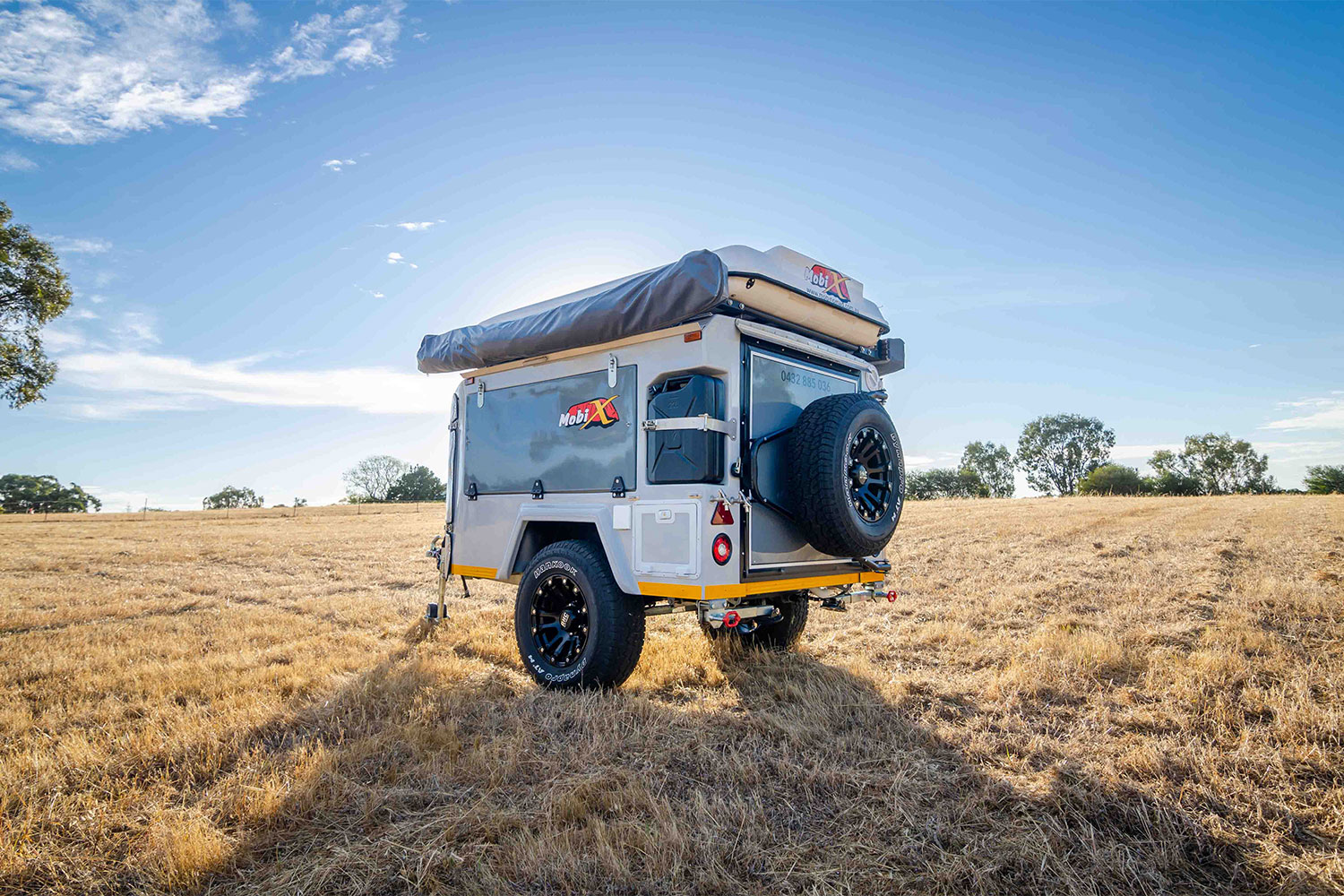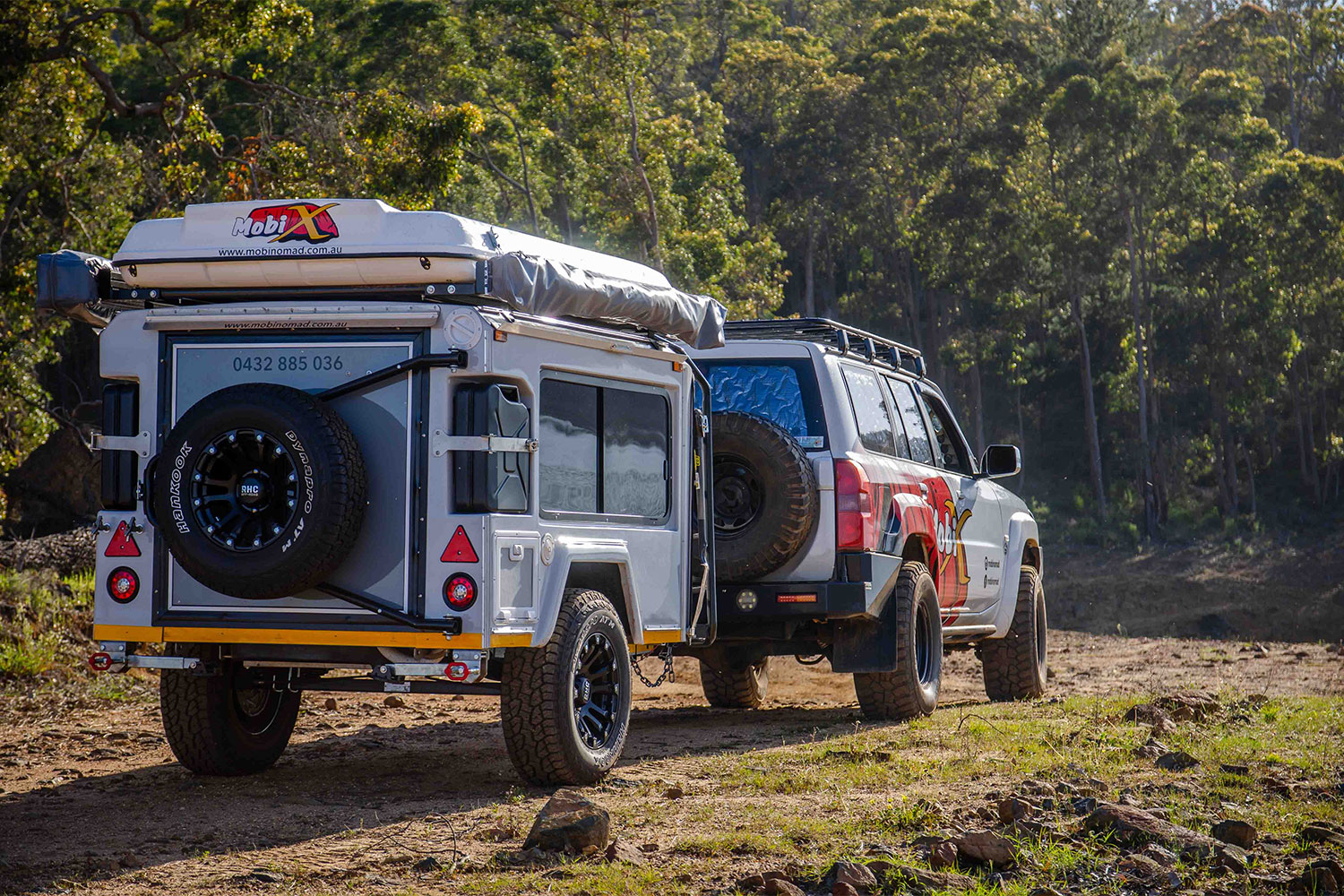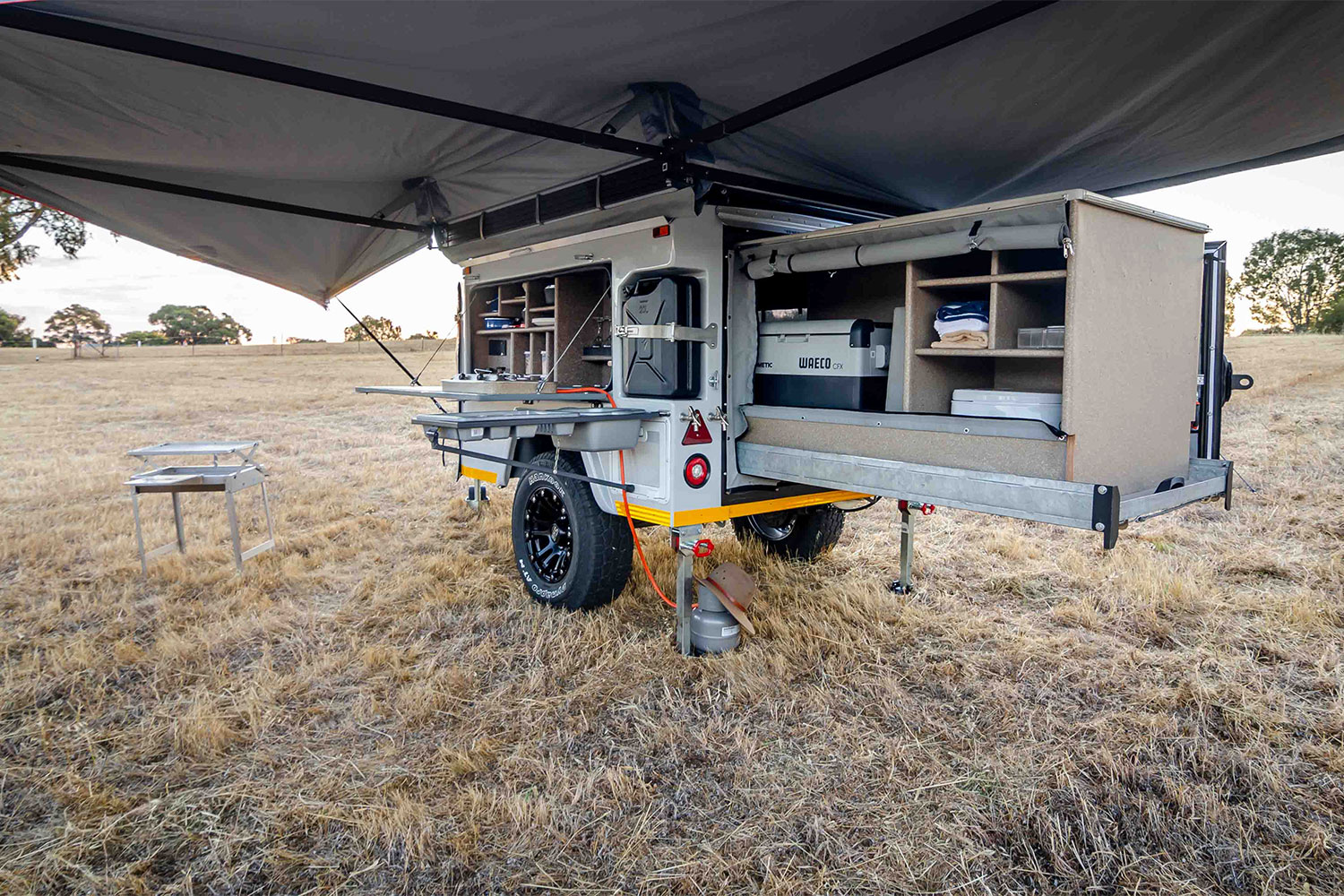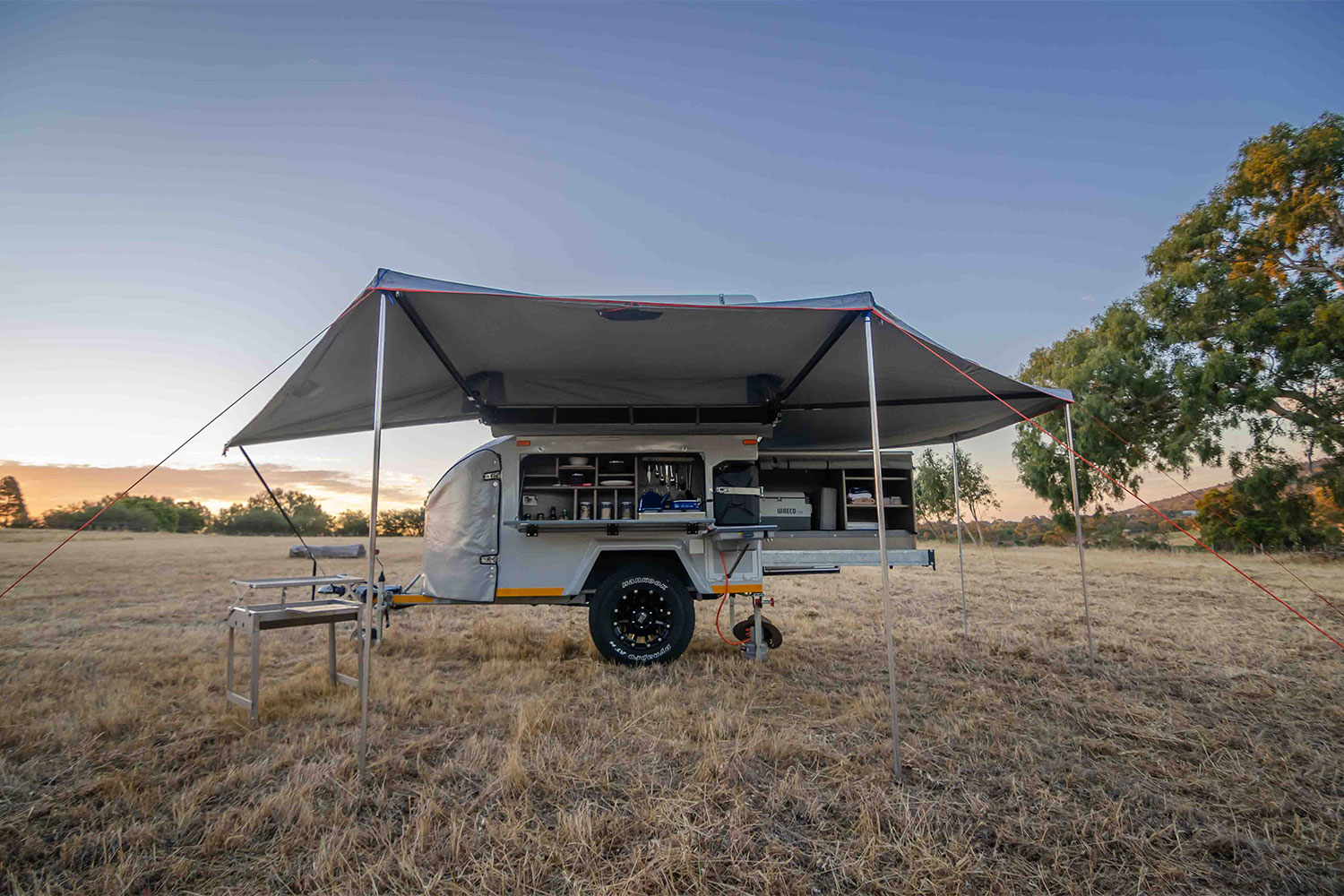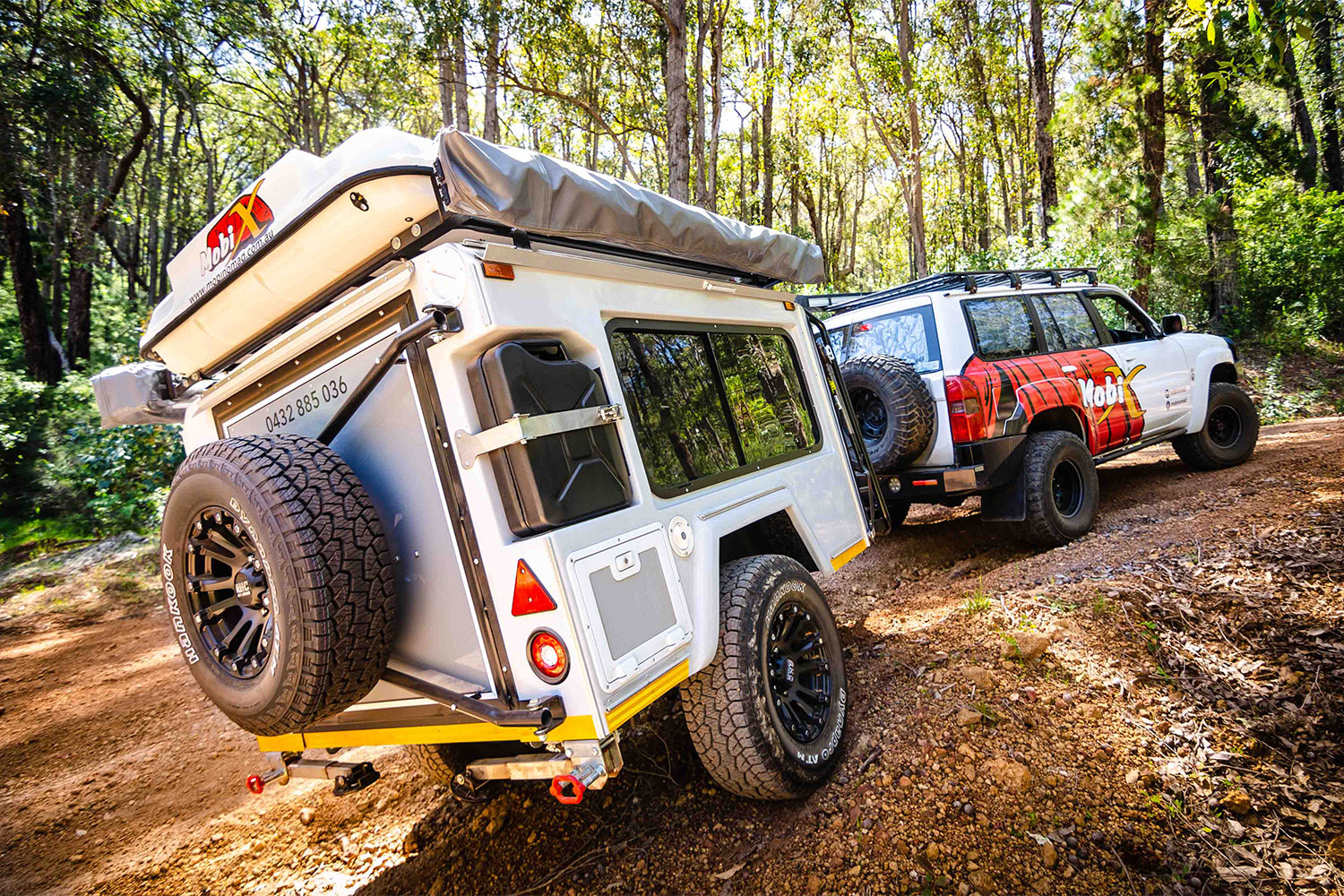Social distancing might be the “new normal,” but for some, the standard guidelines for keeping a safe distance from their fellow humans just aren’t enough. More and more Americans are looking to escape far from civilization in the form of overlanding (or extreme road-tripping). Getting off-grid requires a properly equipped vehicle or a rugged, off-road-ready travel trailer — a travel trailer like the new Mobi X.
The Mobi X is the latest from Mobi Nomad — a company that proudly boasts extreme travel trailers that are “born in Africa, bred for Australian conditions.” Despite its ultra-compact footprint, it expands to serve as a full-featured basecamp for six. Inside is a cozy bedroom for two with plenty of pockets, lights, and electrical sockets to feel almost like home. Exterior panels at the side and rear reveal a well-equipped camp kitchen with a fridge, sink, and two-burner cooktop, plus all necessary dishes, utensils, and cookware. The optional rooftop tent is roomy enough to sleep four campers, while the standard bathroom tent adds shower and toilet facilities into the mix. Fully loaded, the Mobi X carries nearly 40 gallons of water served up with 2.7 bars of pressure — plenty for a proper shower or to hose off your outdoor gear. The 15-amp electrical system is more than enough for all but the most demanding campers.
This all-new model slots into Mobi Nomad’s lineup under the company’s namesake Mobi Nomad travel trailer. This flagship hybrid features a surprising and almost unheard-of feature for a teardrop trailer — a legit slide-out that expands the interior to more than 130 square feet of living space. It’s roomy enough for a permanent bathroom, island bed, and a full kitchen that all sets up in less than two minutes. The Nomad’s durability comes thanks to a one-piece mono-hull fiberglass construction with a steel structure and stainless steel fittings. Plus, the chassis is made of galvanized steel sitting on a 2.5-ton suspension with a 2.7-ton brake coupler. It’s lightweight, stable, and ready to tow just about anywhere. At nearly U.S. $40,000, it should be.
The Mobi X camper starts around $21,000 (AUD $29,000), although a well-equipped model with all the bells and whistles, like the one described above, is priced considerably higher.
Pickup truck owners looking for a more compact, all-in-one solution might find what they’re looking for in the Alu-Cab Canopy Camper.
